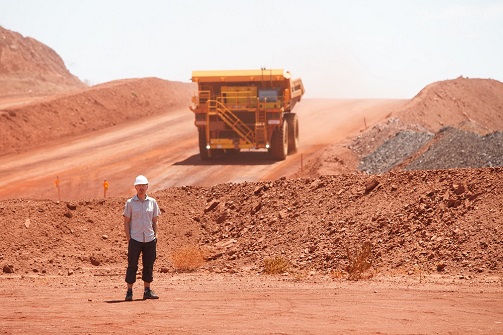
Australia’s minerals industry is navigating a transformative period marked by a dual focus on decarbonisation and the supply of critical minerals essential for the global energy transition. The demand for energy transition minerals has doubled since 2019 and is expected to double again by 2030. This shift, combined with advancements in digitisation and automation, is reshaping the way resources are discovered, mined, and processed. The implications of these changes are profound, presenting both remarkable opportunities and significant challenges for the sector.
To address these complexities, an accelerated approach to innovation is crucial. This involves fostering collaboration across various stakeholders, enabling them to experiment, learn, and adapt collectively. At the core of this initiative is the collaboration between organisations, which is vital for unlocking the full potential of Australia’s mineral resources.
Harnessing Collaborative Expertise
At the Commonwealth Scientific and Industrial Research Organisation (CSIRO), collaboration is central to ongoing innovation efforts. Researchers in mineral resources are working alongside energy transition experts to develop decarbonisation pathways for mineral processing and green steel production. The collaboration leverages expertise in electrification and alternative fuels, such as hydrogen and ammonia, to address both material challenges and carbon management technologies.
CSIRO teams have begun applying carbon capture technologies to blast furnace waste gases, targeting current emissions while exploring longer-term solutions like hydrogen plasma smelting. This integrated approach recognises that energy transitions occur within an interconnected system, necessitating comprehensive solutions that encompass both energy sourcing and utilisation.
Further enhancing these efforts, mineral resources researchers are collaborating with CSIRO’s specialists in artificial intelligence (AI), machine learning, and robotics. These partnerships are designed to adapt advanced digital tools for mining environments, which present unique challenges compared to more controlled settings like warehouses. This collaboration enables the implementation of cutting-edge automation techniques that enhance safety, precision, and efficiency on site.
Partnerships Driving Innovation
One notable example of successful collaboration is the partnership between CSIRO and Northern Star Resources in gold exploration. The two organisations are utilising laser-induced breakdown spectroscopy (LIBS) technology to analyse core samples directly in the field. This innovation translates traditional laboratory processes into near-real-time, on-site mineral mapping, expediting measurement and reducing costs.
Such partnerships not only facilitate speedier decision-making but also create a feedback loop that drives continuous improvement in software and data processing. This iterative learning process ensures that each project lays the groundwork for future research, effectively mitigating risks associated with innovation.
CSIRO is also co-leading the $10 million Green Metals Innovation Network (GMIN) alongside the Heavy Industry Low-carbon Transition Cooperative Research Centre (HILT CRC). This government-supported initiative aims to accelerate the development of low-emission metal production in Australia. By uniting research, government, and industry, GMIN tackles the technical and economic challenges of producing metals such as iron, steel, alumina, and aluminium with a lower carbon footprint.
The initiative is designed to promote the adoption of green processing technologies and develop a skilled workforce ready for the green metal sector. Australia’s ability to establish responsible supply chains around critical minerals is paramount to seizing the opportunity for new onshore industries, positioning the country as a trusted supplier in global markets.
In addition to GMIN, the Australian Critical Minerals Research and Development (R&D) Hub, established in 2022 with funding from the Department of Industry, Science and Resources, exemplifies collaborative efforts in this area. The Hub unites expertise from leading research agencies, including ANSTO and Geoscience Australia, to enhance Australia’s critical minerals research landscape.
By working closely with industry and universities, the Hub aims to scale up Australia’s critical minerals potential while addressing key challenges and building strategic supply chain resilience. Collaborative efforts within the Hub also facilitate knowledge sharing, enabling researchers to collectively tackle emerging challenges and expedite the transition from research to real-world impact.
Through initiatives like GMIN and the Critical Minerals R&D Hub, CSIRO and its partners are actively turning ambition into action. Their collaborative approach is paving the way for sustainable prosperity across Australia’s industries and communities, ensuring that the nation remains at the forefront of the global transition to low-emission materials.







